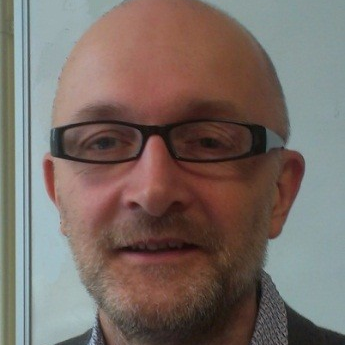Membrane Separation Techniques – Optimization and Application
A special issue of Applied Sciences (ISSN 2076-3417). This special issue belongs to the section "Chemical and Molecular Sciences".
Deadline for manuscript submissions: closed (30 November 2018) | Viewed by 27315
Special Issue Editor
Interests: Chris Wright’s laboratory focuses on the characterization and control of biological interactions within bioprocess engineering and medicine. This control is focused on fabrication and modification of polymer surfaces. His research interests include Atomic force microscopy, Membrane Separation, Scaffolds for tissue engineering, Collagen, Biofilms, Electrospinning
Special Issue Information
Dear Colleagues,
We are pleased to announce an upcoming Special Issue focusing on “Membrane Separation Techniques—Optimization and Application”, with Guest Editor Chris Wright. It is our pleasure to invite you to contribute to this Special Issue.
Membrane separation is an established technique used for processing in a wide range of industries, including water treatment, energy generation, biotechnology, food processing, and pharmaceutical production. This is a consequence of the versatility and advantages of membrane separation, and many processes have been developed that include microfiltration, ultrafiltration, nanofiltration, reverse osmosis, forward osmosis, and membrane distillation. These membrane process can be applied in different configurations and operation modes. However, the underlying scientific principle of a membrane process is a selective separation achieved due to physical and chemical differences between a membrane, solute(s), and a solvent. A driving force is applied, and the solute can either be retained by the membrane or pass through with the solvent depending on its size, charge, activity, or partial pressure. The use of membranes has many advantages over more conventional methods such as distillation and chemical extraction, which include high selectivity, relatively low operating costs, with low energy usage, process versatility, and modular design. The science of membrane separation techniques is being applied more and more in industrial applications to exploit the advantages of membrane technologies. Hence, the rationale for this Special Issue that will act as a forum to present the latest developments and opportunities for the application of membrane separation techniques.
We therefore invite authors globally to contribute original research articles and review papers defining the most recent developments and ideas in the application and optimisation of membrane separation techniques.
Potential topics include, but are not limited to, the following:
- Development of membrane separation techniques
- Application of membrane techniques
- Optimisation methods for improved application of membranes
- Characterisation of membranes
- Novel configuration of membrane processes
- Fabrication and modification of membranes
- Case study of membranes applied in industry
- Fouling/biofouling of membranes
Guest Editor
Manuscript Submission Information
Manuscripts should be submitted online at www.mdpi.com by registering and logging in to this website. Once you are registered, click here to go to the submission form. Manuscripts can be submitted until the deadline. All submissions that pass pre-check are peer-reviewed. Accepted papers will be published continuously in the journal (as soon as accepted) and will be listed together on the special issue website. Research articles, review articles as well as short communications are invited. For planned papers, a title and short abstract (about 100 words) can be sent to the Editorial Office for announcement on this website.
Submitted manuscripts should not have been published previously, nor be under consideration for publication elsewhere (except conference proceedings papers). All manuscripts are thoroughly refereed through a single-blind peer-review process. A guide for authors and other relevant information for submission of manuscripts is available on the Instructions for Authors page. Applied Sciences is an international peer-reviewed open access semimonthly journal published by MDPI.
Please visit the Instructions for Authors page before submitting a manuscript. The Article Processing Charge (APC) for publication in this open access journal is 2400 CHF (Swiss Francs). Submitted papers should be well formatted and use good English. Authors may use MDPI's English editing service prior to publication or during author revisions.
Keywords
- Membranes
- Separation
- Water treatment
- Fouling
- Biofouling
- Microfiltration
- Ultrafiltration
- Nanofiltration
- Reverse osmosis
- Forward osmosis
- Membrane distillation
Benefits of Publishing in a Special Issue
- Ease of navigation: Grouping papers by topic helps scholars navigate broad scope journals more efficiently.
- Greater discoverability: Special Issues support the reach and impact of scientific research. Articles in Special Issues are more discoverable and cited more frequently.
- Expansion of research network: Special Issues facilitate connections among authors, fostering scientific collaborations.
- External promotion: Articles in Special Issues are often promoted through the journal's social media, increasing their visibility.
- e-Book format: Special Issues with more than 10 articles can be published as dedicated e-books, ensuring wide and rapid dissemination.
Further information on MDPI's Special Issue polices can be found here.





